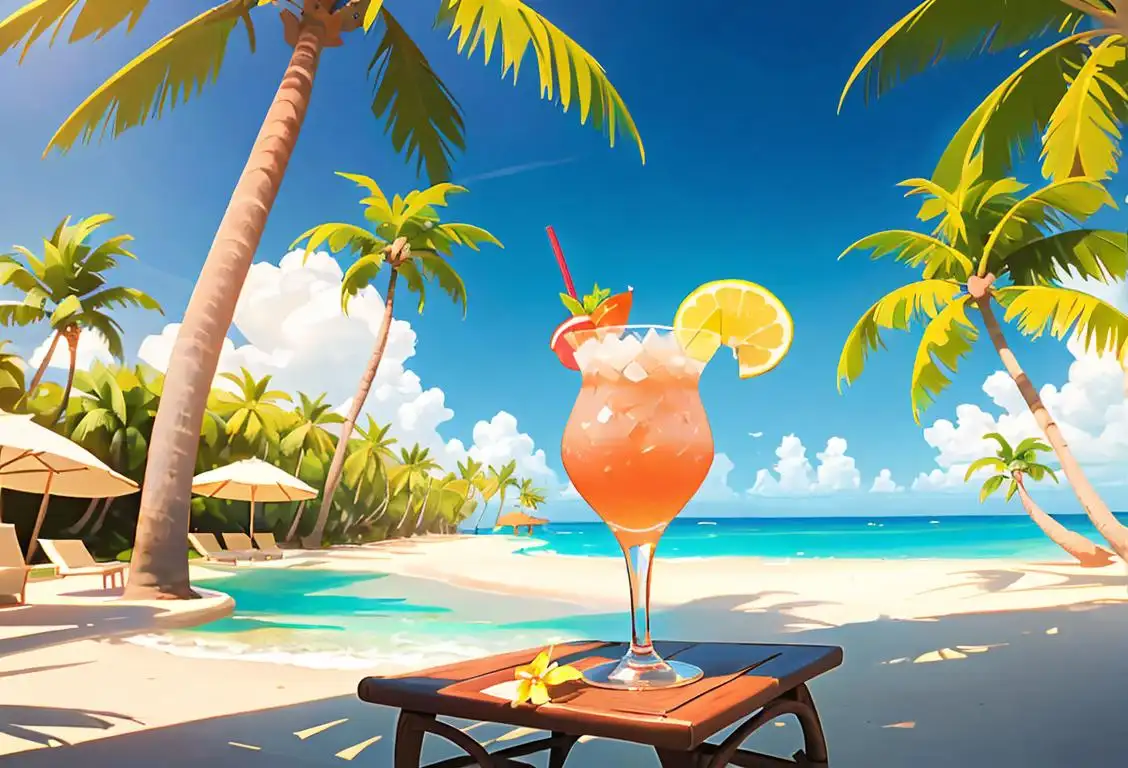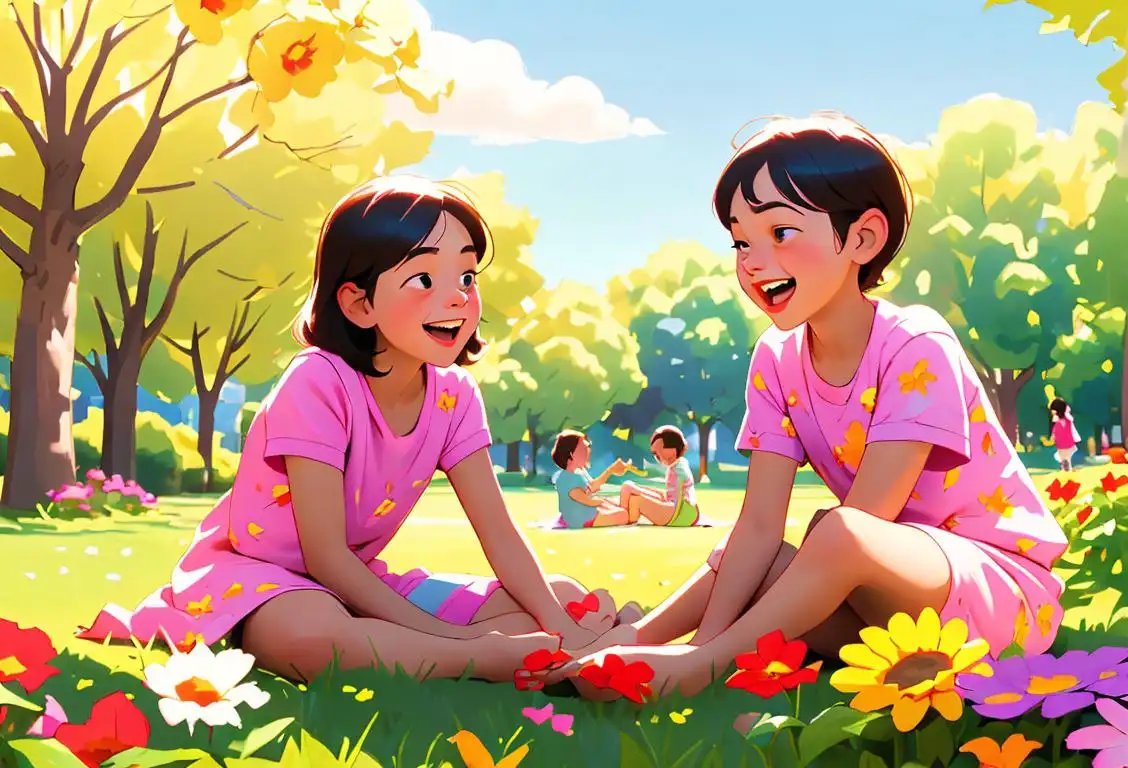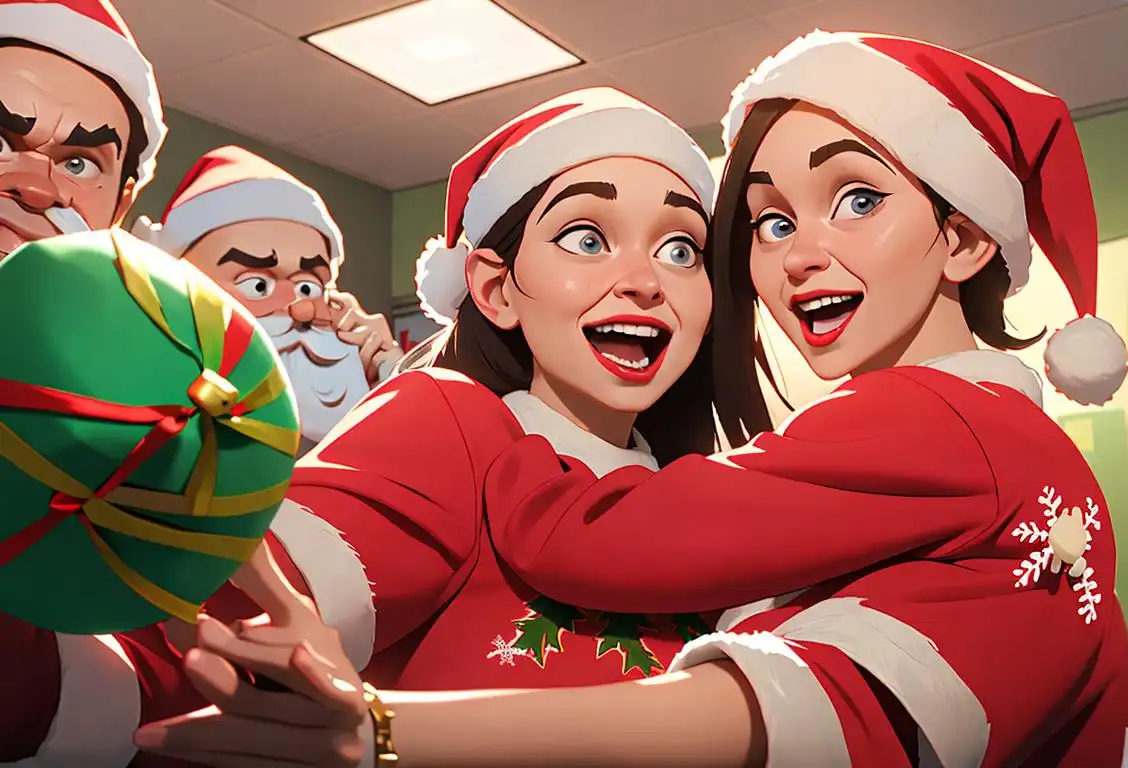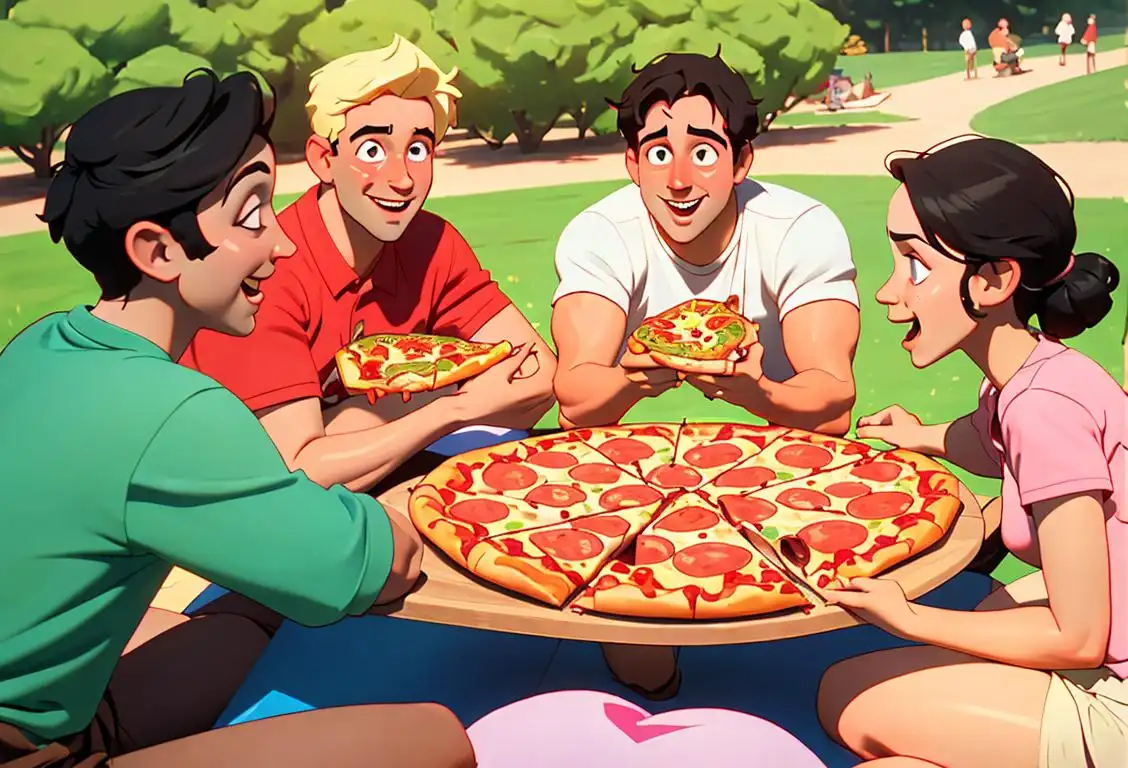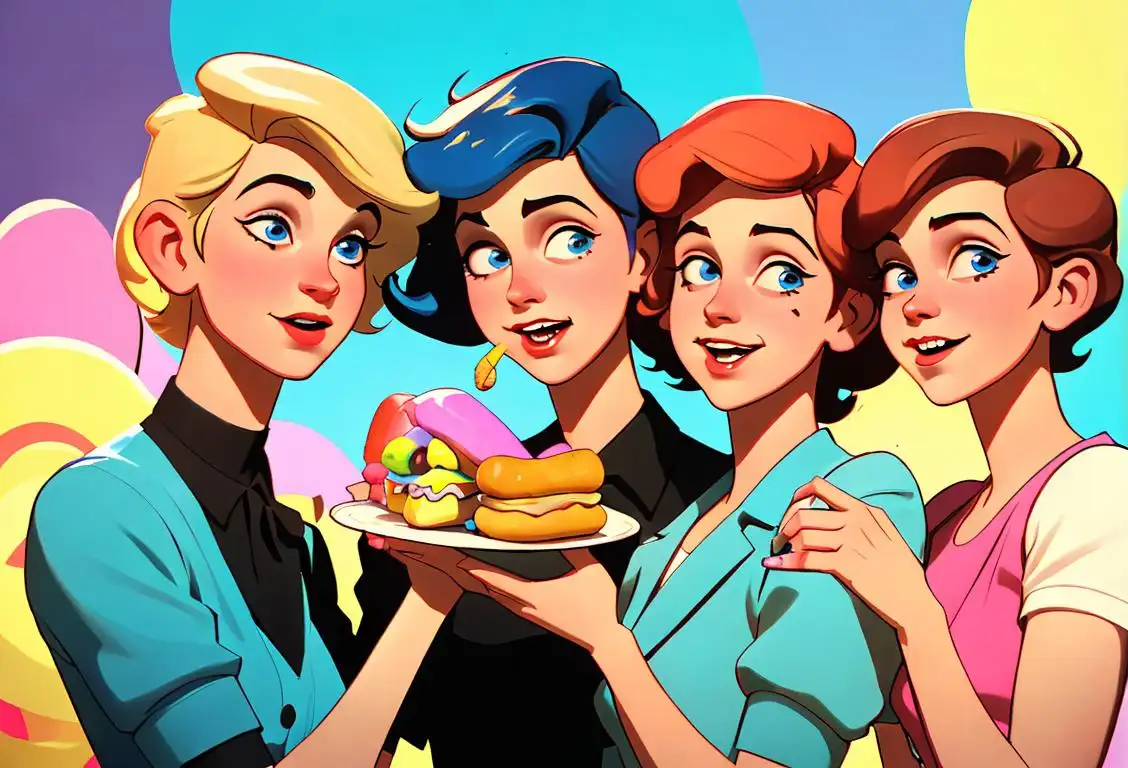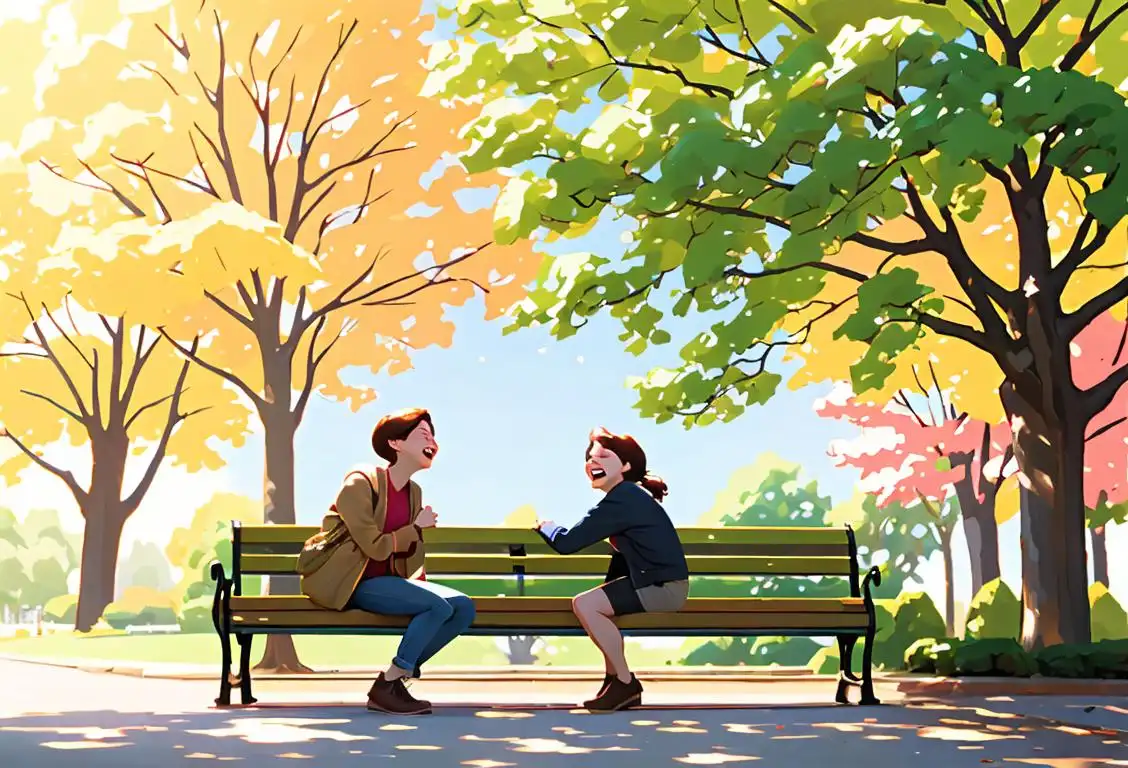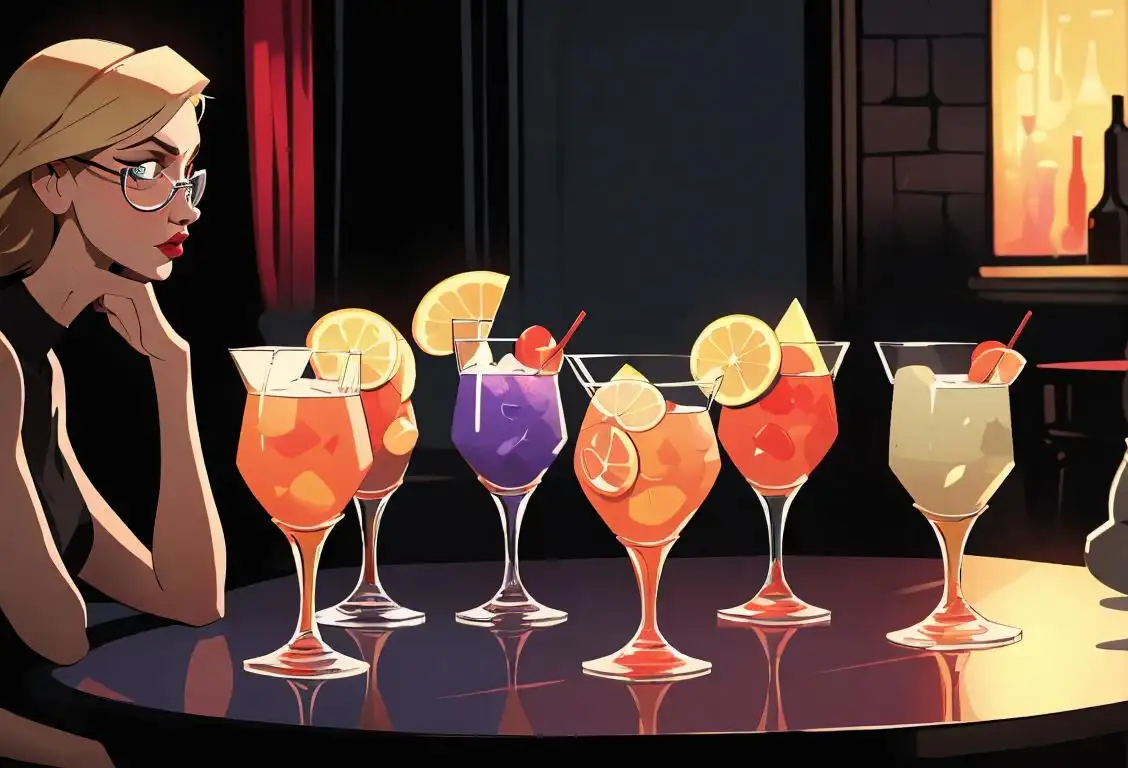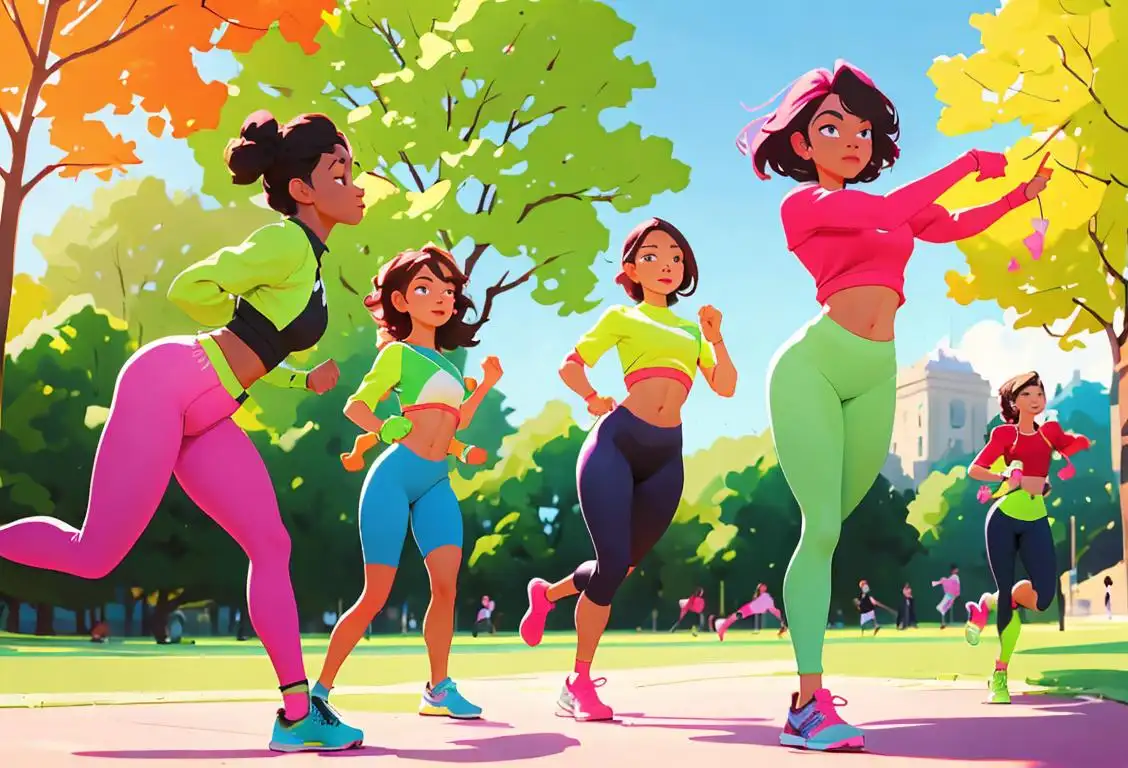National Spooky Day
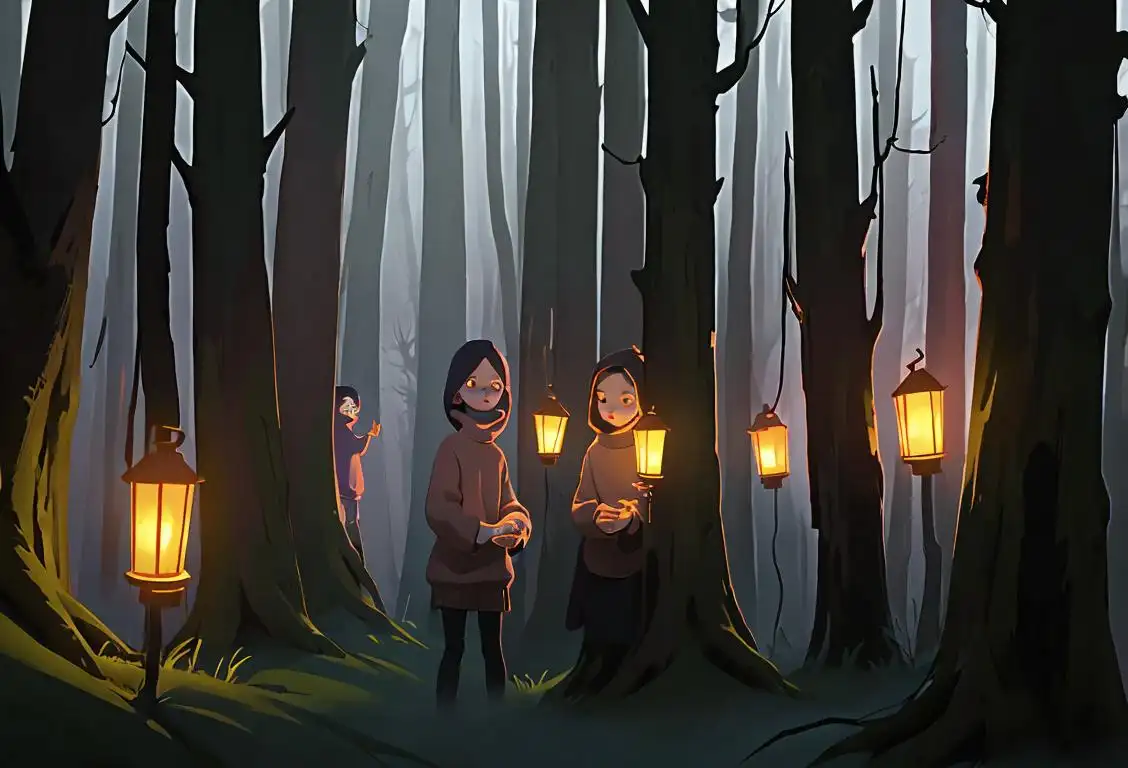
Guess what day it is? It's National Spooky Day! Get ready to embrace the spine-chilling and hair-raising vibes that this day brings. Whether you're a fan of haunted houses, ghost stories, or just relishing in the thrill of the unknown, National Spooky Day is the perfect opportunity to celebrate all things eerie and mysterious. So, grab your flashlight and join us on this spooky adventure!
When is Spooky Day?
It's national spooky day on the 31st October.
The Origins of National Spooky Day
Every year on October 31st, people all over the world celebrate Halloween and embrace the spookier side of life. But how did National Spooky Day come to be? Well, it all started with the rise of the internet and the fascination with creating unique national days.
On October 31, 2017, the internet exploded with mentions of National Spooky Day. From social media posts to blog articles, everyone seemed to be talking about it. While the exact origin of this day remains a mystery, its popularity grew rapidly, and it has since become a beloved annual occasion.
Celebrating National Spooky Day
When it comes to celebrating National Spooky Day, the sky's the limit (or should we say the cemetery gates?). Here are a few spooky ideas to get you in the spirit:
- Host a costume party and encourage guests to come dressed as their favorite spooky character. Whether it's a classic vampire, a wicked witch, or even a terrifying zombie, the possibilities are endless!
- Create a haunted house in your own backyard. From jump scares to creepy crawlies, give your friends and family a spooky experience they won't forget.
- Organize a ghost tour in your city. Uncover the chilling tales and haunted locations that lurk just beneath the surface.
Did You Know?
Did you know that Halloween, the holiday synonymous with all things spooky, has its roots in ancient Celtic customs? The Celts believed that on the night of October 31st, the boundary between the living and the dead blurred, allowing spirits to roam freely among the living. This tradition eventually evolved into the modern-day celebration we know and love.
History behind the term 'Spooky'
1550
Early usage in the English language
The term 'spooky' originated in the English language around the year 1550. It was derived from the word 'spook,' which meant ghost or spirit. Initially, 'spooky' was used to describe something that was eerie or ghostly.
1753
The Origins of 'Spooky'
The term 'spooky' originated from the word 'spook', which was a noun used to describe a ghost or supernatural being. This term was first recorded in 1753 and was primarily used in African American Vernacular English during that time.
spooky 13th Century
Early Usage
The term 'spooky' can be traced back to the 13th century. It is derived from the Middle English word 'spook', which meant 'to frighten' or 'to terrify'. During this time, 'spooky' was primarily used to describe something eerie, mysterious, or associated with supernatural elements. The word often referred to ghostly occurrences, haunted places, or things that caused fear or unease.
1553
The Birth of 'Spook'
The term 'spook' originated in 1553 and was initially used to refer to a ghost or apparition. It is derived from the Dutch word 'spooc,' which means specter or ghost. In the early years, the term was primarily associated with supernatural beings and was commonly used in folklore and ghost stories.
1795
The birth of the term
The term 'spooky' first appeared in a Massachusetts newspaper called The Salem Gazette in 1795. It was used to describe something eerie or ghostly that caused a sense of fear or unease. At this time, the word was primarily associated with things that were supernatural or unsettling.
circa 1849
The Emergence of 'Spook' as a Slang Term
In the mid-19th century, the term 'spook' started to gain popularity as a slang term in the United States. Initially, 'spook' referred to a ghost or specter, but it soon expanded to encompass anything eerie or unsettling. This usage likely derived from the association of the word with spiritual beings and dark, mysterious entities.
1824
Origins of 'spooky'
The term 'spooky' can be traced back to the year 1824 in the United States. It originally referred to something that caused fear or unease. It derived from the word 'spook,' which was a slang term for a ghost or specter. At this time, 'spooky' was primarily used in the context of supernatural or ghostly encounters.
1837
Origins of the word 'spooky'
The term 'spooky' originated in the United States in 1837. It is derived from the Dutch word 'spook', meaning ghost or apparition. Dutch immigrants brought the term to America, and it gradually became a part of American English.
1882
The Transformation to 'Spooky'
In 1882, the term 'spooky' emerged as an adjective, derived from the noun 'spook.' It started to be used to describe anything eerie, uncanny, or ghostly. This expansion of its meaning allowed 'spooky' to extend beyond traditional ghost stories and encompass a broader range of supernatural and mysterious phenomena.
1930s
Hollywood's influence
During the 1930s, Hollywood began producing a wave of horror films that became incredibly popular. These movies, such as 'Dracula,' 'Frankenstein,' and 'The Mummy,' featured spooky characters and eerie atmospheres. The term 'spooky' started to gain more recognition and became synonymous with the thrill and excitement of these horror films.
spooky 19th Century
Evolution in Popular Culture
In the 19th century, the term 'spooky' gained popularity and expanded its meaning beyond just fear or the supernatural. It started to encompass a broader range of unsettling or strange experiences. During this time, spooky tales and folklore gained significant attention, with writers like Edgar Allan Poe making a profound impact on the genre. The fascination with spooky stories, haunted houses, and eerie atmospheres paved the way for the word to become associated with mystery and suspense.
Early 20th Century
Influence of African American Vernacular
During the early 20th century, the term 'spook' took on a new meaning within African American Vernacular English (AAVE). In this context, 'spook' was used as a derogatory term to refer to African Americans. The derogatory connotation stemmed from the stereotype that black people were similar to ghosts or phantoms, lurking in the shadows. It is worth noting that this usage of 'spook' as a racial slur is no longer acceptable and should not be perpetuated.
1931
Popularity in Literature
By the early 20th century, 'spooky' started to gain popularity in literature. It was frequently used in horror stories and mystery novels to create an eerie atmosphere. Authors skillfully incorporated the term to describe haunted places, supernatural events, or the unsettling presence of ghosts. This further solidified 'spooky' as a term associated with elements of fear and the unknown.
1881
Popularity in literature
In 1881, the term 'spooky' gained popularity in literature. It was featured in the work of American writer Mark Twain, in his novel 'The Prince and the Pauper'. The usage of the term in Twain's book helped to spread its popularity across the country.
1881
'Spooky' in literature
In 1881, the term 'spooky' became more prominent in literature. It was used by Mark Twain in his book 'The Prince and the Pauper' to describe an eerie atmosphere. This increased exposure helped popularize the term.
1823
Expanding the Usage
In 1823, the term 'spooky' gained broader recognition when it was mentioned in a Kentucky-based newspaper called the Lexington Intelligencer. The newspaper used 'spooky' to describe strange or haunted occurrences, further solidifying its connection to supernatural or eerie experiences.
1950s
Spooky in music
In the 1950s, a new genre of music emerged known as 'spooky music' or 'spooky pop.' Artists like Screamin' Jay Hawkins with his iconic song 'I Put a Spell on You' and Bobby 'Boris' Pickett with 'Monster Mash' embraced the spooky theme, creating catchy tunes with haunting lyrics. These songs further popularized the term 'spooky' in popular culture.
1920s
Growing association with the supernatural
During the 1920s, the term 'spooky' started to become closely associated with mysterious and supernatural elements. It was often used to describe eerie or ghostly experiences, adding a sense of mystery and intrigue to various storytelling mediums.
Mid-20th Century
Reclamation and Reinterpretation
As the civil rights movement gained momentum in the United States, there was a push to reclaim and reinterpret derogatory terms used against minority groups. In the mid-20th century, 'spook' underwent a transformation as African American writers and activists started using the word in an empowering and defiant manner, shedding the negative connotations associated with it. This reclamation aimed to redefine 'spook' as a symbol of resistance and resilience.
1884
Embracing 'Spooky' in Literature
The term 'spooky' made its way into popular literature in 1884 when it was used by American writer George Washington Cable in his novel 'The Grandissimes'. Cable described a character as having 'spooky eyes,' emphasizing an unsettling and supernatural quality.
spooky 20th Century
Influence of Horror Films
The 20th century saw the rise of horror films, which further solidified the term 'spooky' in popular culture. Classic horror movies such as 'Psycho' and 'The Exorcist' made use of eerie, haunting elements to create a chilling atmosphere, reinforcing the connection between 'spooky' and things that invoke fear. These films captivated audiences and led to the term 'spooky' being widely used to describe anything creepy, uncanny, or supernatural in nature.
1928
Integration into Pop Culture
By 1928, the term 'spooky' had integrated itself into pop culture, particularly in the realm of horror movies and literature. With the dawn of the horror genre, 'spooky' became a popular adjective to describe chilling and frightening elements found in these works. This cultural exposure solidified 'spooky' as a go-to word for inducing fear or creating an eerie atmosphere.
1950s
Rise in Pop Culture
During the 1950s, 'spooky' began to make appearances in the world of pop culture. It became a buzzword in movies, music, and television shows. The term was often used to describe eerie or suspenseful moments, adding a sense of mystery and excitement to various forms of entertainment. This widespread usage helped to establish 'spooky' as a part of popular vernacular.
1920s
Spooky in the Jazz Age
During the 1920s, known as the Jazz Age, the term 'spooky' gained a new meaning. It was used to describe someone who was mysterious or enigmatic. This usage was particularly prevalent in jazz circles, reflecting the fascination with all things mysterious.
Late 20th Century
Evolution into 'Spooky'
By the late 20th century, the slang term 'spooky' emerged as an adjective derived from the original term 'spook.' This transformation allowed for a more versatile usage of the word, describing anything that evoked a feeling of eerie fascination or the supernatural. Whether referring to a haunted house or a haunting melody, 'spooky' had taken on a life of its own, captivating popular culture and entering mainstream vocabulary.
1950s
Influence on horror movies
In the 1950s, 'spooky' became an integral part of the horror movie genre. It was frequently used to describe the atmosphere, setting, or overall feeling of unease in horror films. This association solidified the term's connection with all things creepy and suspenseful.
1990s
Halloween and 'Spooky' Vibes
In the 1990s, 'spooky' became strongly associated with the Halloween season. Halloween-themed decorations, costumes, and parties embraced the concept of 'spooky' and incorporated it into their themes. 'Spooky' motifs were commonly used, such as witches, black cats, and haunted houses. The term became synonymous with the spine-chilling and thrilling aspects of Halloween, solidifying its place in the lexicon of the holiday.
1941
Spooky in Popular Music
The term 'spooky' made its way into popular music in 1941 when a song titled 'Tain't No Use' featured the line 'What an atmosphere, spooks all around everywhere.' This marked the beginning of 'spooky' being used in songs to evoke feelings of unease or mystery. The song's success contributed to the mainstream recognition of the term and its association with haunting or eerie themes.
1905
Spooky in Film and Theater
The term 'spooky' found its place in the entertainment industry in 1905 when it was used as the title of a silent film called 'The Spook'. This film showcased supernatural elements and helped popularize the term further. 'Spooky' also started making appearances in theatrical productions, especially those with ghostly themes.
1960s
The Scooby-Doo effect
The introduction of the animated TV series 'Scooby-Doo, Where Are You!' in 1969 had a significant impact on the use of the term 'spooky.' The show featured a group of teen detectives solving supernatural mysteries, often encountering spooky villains. The catchphrase 'That's spooky!' became widely known and associated with unexplained occurrences or frightening situations.
1961
Spooky becomes a hit song
In 1961, the term 'spooky' achieved even greater popularity with the release of a hit instrumental song titled 'Spooky' by saxophonist Mike Sharpe. The catchy tune and its association with mystery and allure contributed to the term's continued usage and recognition.
spooky 21st Century
Internet Culture and Memes
With the advent of the internet and the rise of social media in the 21st century, the term 'spooky' took on new dimensions. It became widely used in memes, online jokes, and pop culture references. 'Spooky' transformed into a humorous, lighthearted term associated with Halloween, paranormal activities, and supernatural memes. It also became a slang term to describe something cool or captivating. This shift in meaning showcased how language evolves with changing times and how the term 'spooky' continues to be relevant in modern-day contexts.
1990s
Spooky as a positive attribute
In the 1990s, the term 'spooky' took on a new meaning among young people. It began to be used as a way of expressing admiration or fascination for something cool, mysterious, or unconventional. It gained popularity in slang vocabulary, especially among teenagers and within subcultures like the goth and alternative scenes.
1929
Spooky in Song
In 1929, the term 'spooky' found its way into the realm of music with the release of 'Spooky Blues' by the Charles Pierce Orchestra. The song's lyrics and melody created a haunting ambiance, reinforcing 'spooky' as a descriptive term for eerie or unsettling experiences.
1960s
Spooky as Slang
During the 1960s, 'spooky' gained popularity as slang, particularly among the counterculture movement. It became a way to describe something that was strange, unsettling, or otherworldly. The term began to transcend its association with the supernatural and was used more broadly to describe any situation or person that seemed mysterious or odd.
1990s
Pop culture references
During the 1990s, 'spooky' gained further prominence in popular culture. It became a commonly used term in various forms of entertainment, including music, television shows, and books. The word's versatility and wide-ranging cultural impact helped it remain relevant and commonly used over the years.
1990s
Spooky in pop culture
Throughout the 1990s, 'spooky' became a ubiquitous term in popular culture. It was often used to describe supernatural or paranormal occurrences in movies, TV shows, and books. The term became associated with the supernatural and eerie themes, solidifying its place in the cultural lexicon.
Present Day
From Fear to Fun
Today, 'spooky' is no longer exclusively connected with fear and unease. It has evolved to encompass a broader range of emotions, including excitement, anticipation, and thrill. The term is widely used in a light-hearted manner, often associated with celebrating the supernatural and enjoying the festive spirit of Halloween. From spooky movies and haunted house attractions to seasonal decorations, 'spooky' has become a beloved term that evokes a sense of fun and adventure in the modern world.
Present
Spooky culture
In today's culture, 'spooky' has evolved to encompass various elements such as Halloween aesthetics, paranormal interests, horror-themed events, and online communities dedicated to spooky content. It has become a versatile term associated with all things eerie, mysterious, and thrilling, transcending its initial supernatural connotations.
1968
The Success of 'Spooky'
The term 'spooky' gained significant popularity in the late 1960s when the song 'Spooky' became a major hit for the Classic IV, reaching the Billboard Hot 100 and becoming a Halloween classic. The song's success further solidified 'spooky' as a term associated with eerie or supernatural elements.
Present
Spooky as a slang term
Today, 'spooky' has evolved beyond its original meaning and is often used as a slang term to describe something that is unsettling, creepy, or strange. It is frequently used to refer to things related to horror, Halloween, or the occult. The term's versatility and cultural significance make it a popular word in contemporary language.
1990s
Spooky in Internet Culture
The 1990s marked the dawn of the internet era, and 'spooky' found a new home in online communities. It became a term frequently used to describe creepy or unsettling content on the web. From horror-themed websites to eerie online stories, 'spooky' became ingrained in internet culture and formed an integral part of the online lexicon surrounding creepy phenomena.
Present day
Continued usage and Halloween association
In the present day, 'spooky' continues to be a vibrant and frequently used term, especially around the Halloween season. It has become synonymous with anything eerie, supernatural, or unsettling. From spooky decorations to spooky stories, the term remains ingrained in popular culture.
Present
Spooky in Contemporary Culture
The term 'spooky' continues to be widely used in contemporary culture to describe anything unsettling, eerie, or associated with the supernatural. It has become a common descriptor during the Halloween season and is often used in films, books, music, and everyday conversation to create an atmosphere of thrilling unease.
Did you know?
Did you know that Halloween, the holiday synonymous with all things spooky, has its roots in ancient Celtic customs?Tagged
fun celebration holiday spookyFirst identified
31st October 2017Most mentioned on
31st October 2017Total mentions
17Other days
Spooky Day
Rum Day
Brothers And Sisters Day
Christmas Party In Offices Day
Pepperoni Pizza Day
Twink Day
Pendejo Day
Friend Day
Vodka Day
Fitness Day
